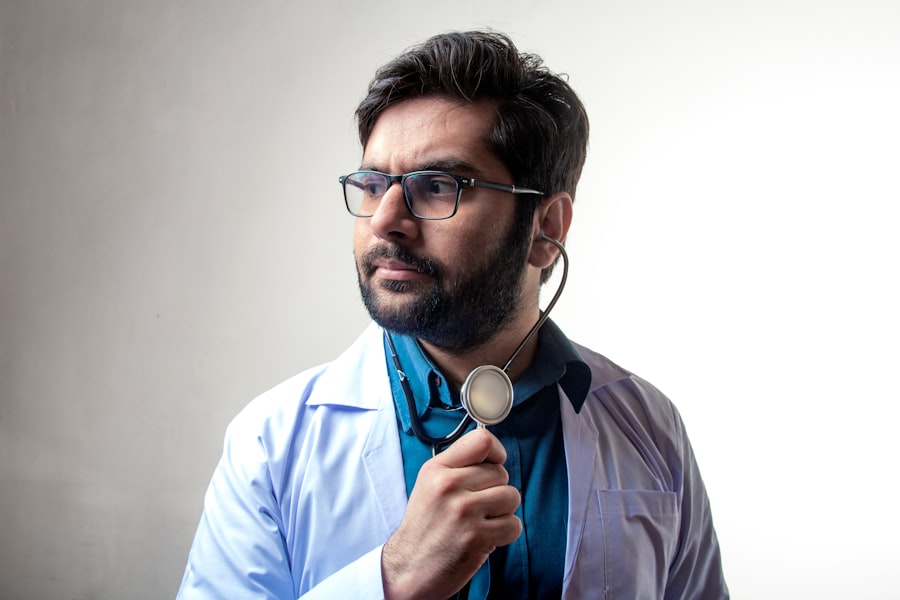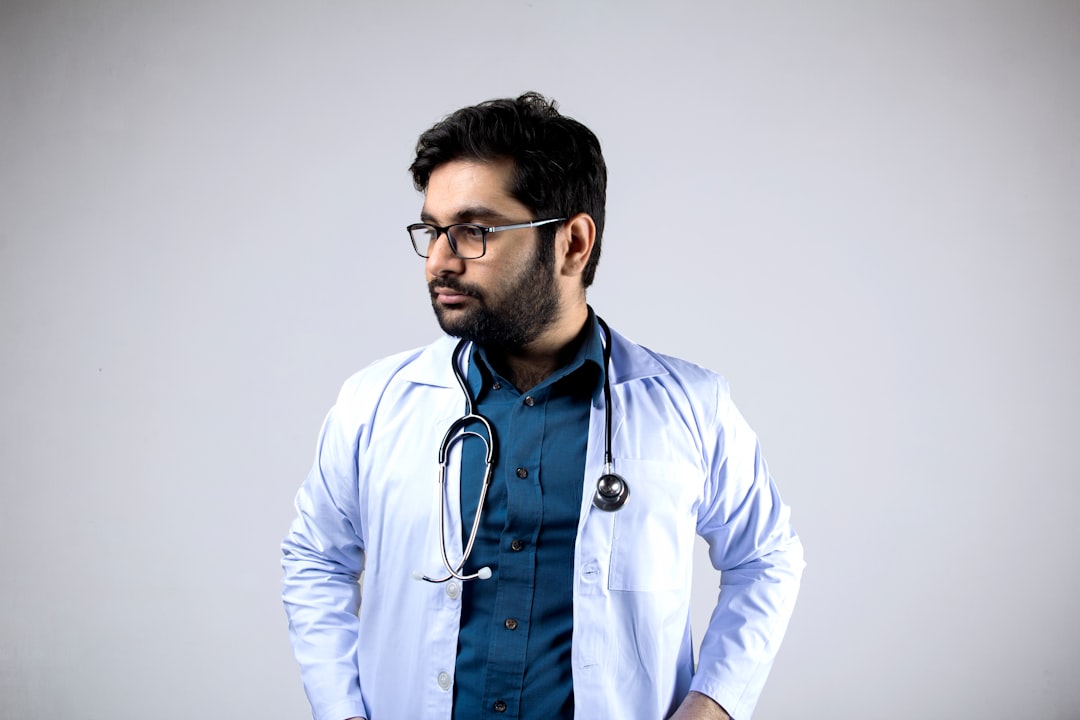Making an appointment with a general practitioner (GP) is often the first step in addressing health concerns. In the UK, this process has been streamlined to ensure that patients can access medical care efficiently. Most individuals begin by contacting their local GP surgery, either by phone or through an online booking system.
The latter has become increasingly popular, allowing patients to view available time slots and select one that suits their schedule. It is advisable to have a clear idea of the reason for the visit, as this can help the receptionist allocate the appropriate amount of time for the appointment. When making an appointment, it is essential to provide accurate personal information, including your name, date of birth, and contact details.
This information helps the surgery maintain accurate records and ensures that you receive timely reminders about your appointment. In some cases, patients may be asked to specify whether they require a routine check-up or if they are experiencing urgent health issues. This distinction is crucial, as it allows the practice to prioritise appointments based on medical need. Book your 1-hour strategy session with Norway Relocation Group.
Summary
- When making an appointment with your GP, be sure to provide clear and concise information about your medical concerns and any specific requirements you may have.
- Upon arrival at the GP’s office, remember to check in at the reception desk and arrive on time to avoid any delays.
- When checking in, have your identification and any necessary paperwork ready to streamline the process and ensure an efficient visit.
- In the waiting room, be mindful of others by keeping noise to a minimum and respecting their privacy while waiting to see the GP.
- When meeting with the GP, be prepared to discuss your medical history and symptoms in detail to assist in an accurate diagnosis and treatment plan.
Arrival at the GP’s Office
Upon arriving at the GP’s office, patients are typically greeted by a welcoming environment designed to put them at ease. The exterior of the building often reflects a community-oriented approach, with clear signage and accessible entrances for those with mobility challenges. Inside, the reception area is usually bright and well-organised, featuring comfortable seating and informative displays about health services available in the area.
As you enter, it is common to notice a variety of patients waiting for their appointments, each with their own unique health concerns. This diversity highlights the importance of primary care in addressing a wide range of medical issues. The atmosphere is generally calm, with staff members working diligently to assist patients and manage the flow of appointments.
This initial impression sets the tone for the visit, reassuring patients that they are in a professional and caring environment.
Checking In

Once you have arrived at the GP’s office, the next step is checking in at the reception desk. This process is straightforward and typically involves confirming your identity and appointment details. Receptionists are trained to handle this efficiently, often using computer systems to quickly locate your records.
It is important to arrive a few minutes early to allow time for this process, especially if there are other patients ahead of you. During check-in, you may be asked to provide additional information, such as your current address or any changes in your contact details since your last visit. This ensures that your medical records are up-to-date and that you can be reached if necessary.
If you have any specific concerns or questions about your appointment, this is also an opportune moment to raise them with the receptionist, who can provide guidance or direct you to the appropriate resources.
Waiting Room Etiquette
The waiting room is an integral part of the GP visit experience, serving as a space where patients can prepare for their consultations. While waiting for your appointment, it is essential to observe proper etiquette to maintain a respectful atmosphere for everyone present. This includes keeping noise levels to a minimum, as many patients may be feeling anxious or unwell and appreciate a quiet environment.
Additionally, it is courteous to refrain from using mobile phones loudly or engaging in disruptive conversations. If you need to take a call, stepping outside or finding a more private area is advisable. Many waiting rooms provide reading materials or health pamphlets, which can be a helpful distraction while you wait.
Engaging with these resources not only helps pass the time but also allows you to learn more about health topics that may be relevant to your situation.
Meeting the GP
When your name is called, it is time to meet with your GP for the consultation. This moment can evoke a mix of emotions, from relief to anxiety, depending on the nature of your visit. The GP will typically greet you warmly and invite you into their consultation room, which is designed to be private and comfortable.
This setting aims to foster open communication between you and your doctor. During this initial interaction, it is important to feel at ease and communicate openly about your health concerns. The GP will likely begin by asking about the reason for your visit and any symptoms you may be experiencing.
This conversation sets the stage for a thorough examination and discussion of your health needs. Remember that GPs are trained professionals who are there to help you; being honest about your symptoms will enable them to provide the best possible care.
Medical History and Symptoms

A crucial part of the consultation involves discussing your medical history and current symptoms with your GP. This information is vital for understanding your overall health and identifying any potential underlying issues. Your GP may ask about previous illnesses, surgeries, allergies, and any medications you are currently taking.
It is beneficial to have this information readily available, as it can significantly impact your diagnosis and treatment plan. In addition to your medical history, be prepared to describe your current symptoms in detail. This includes not only what you are feeling but also when it started, how often it occurs, and any factors that seem to exacerbate or alleviate the symptoms.
Providing comprehensive information allows your GP to make informed decisions regarding further examinations or tests that may be necessary.
Physical Examination
Following the discussion of your medical history and symptoms, your GP may conduct a physical examination as part of the assessment process. This examination can vary in scope depending on the nature of your concerns but typically includes checking vital signs such as blood pressure, heart rate, and temperature. The GP may also examine specific areas of concern based on what you have described during your consultation.
It is important to remember that physical examinations are standard practice and are conducted with professionalism and respect for patient comfort. If you feel uneasy about any part of the examination, do not hesitate to express your concerns; GPs are accustomed to addressing patient anxieties and will do their best to ensure you feel comfortable throughout the process.
Discussion and Diagnosis
After completing the physical examination, your GP will discuss their findings with you. This conversation is crucial as it provides insight into what may be causing your symptoms and outlines potential diagnoses. Your GP will explain their reasoning clearly and may use diagrams or models if necessary to help illustrate their points.
If a diagnosis is made during this visit, your GP will take time to explain what it means for your health moving forward. They will discuss any further tests that may be required or potential treatment options available to you. It is essential to ask questions during this stage; understanding your diagnosis empowers you to take an active role in managing your health.
Treatment Plan
Once a diagnosis has been established, your GP will work with you to develop a treatment plan tailored to your specific needs. This plan may include lifestyle changes, medication prescriptions, referrals to specialists, or recommendations for further tests. Your GP will explain each component of the plan clearly so that you understand what steps need to be taken next.
It is important to discuss any concerns or preferences you have regarding treatment options during this conversation. For instance, if you have reservations about taking certain medications or prefer alternative therapies, sharing these thoughts can lead to a more collaborative approach in managing your health. Your GP’s goal is to ensure that you feel comfortable and informed about the decisions being made regarding your care.
Follow-Up and Referrals
In many cases, follow-up appointments are necessary to monitor progress or adjust treatment plans based on how well you respond to initial interventions. Your GP will discuss when these follow-ups should occur and what they will entail. If referrals to specialists are needed for further evaluation or treatment, your GP will provide guidance on how this process works.
Understanding the importance of follow-up care is crucial for effective health management. These appointments allow for ongoing assessment of your condition and ensure that any changes in symptoms are addressed promptly. Your GP will typically provide written instructions regarding follow-up visits or referrals so that you have clear guidance on what steps to take next.
Payment and Insurance
Finally, after receiving care from your GP, it is essential to address payment and insurance matters before leaving the office. In the UK, most patients receive healthcare services through the National Health Service (NHS), which means that many consultations are free at the point of use for residents. However, if you are visiting a private practice or require additional services not covered by NHS provisions, understanding payment options becomes crucial.
If applicable, ensure that you have your insurance details ready when checking out so that any necessary claims can be processed efficiently. The reception staff can assist with billing inquiries and provide information on payment methods accepted by the practice. Being informed about these aspects helps alleviate any potential stress related to healthcare costs.
In conclusion, navigating a visit to the GP involves several key steps from making an appointment through payment processing after care has been received. Each stage plays an important role in ensuring that patients receive comprehensive medical attention tailored to their individual needs. By understanding this process better, individuals can approach their healthcare visits with confidence and clarity.
For those looking to expand their horizons beyond healthcare matters, consider exploring language courses at NLS Norwegian Language School. With a variety of Norwegian courses available for all levels—from beginners eager to learn basic phrases to advanced learners seeking fluency—NLS offers an enriching experience that combines language learning with cultural immersion. Whether you’re planning a trip to Norway or simply wish to broaden your linguistic skills, NLS provides expert instruction in a supportive environment that fosters growth and confidence in language acquisition.
Speak Norwegian with confidence. Enroll in a class at the NLS Norwegian Language School now.

